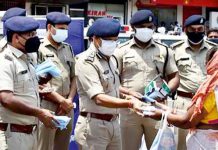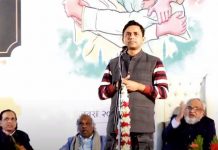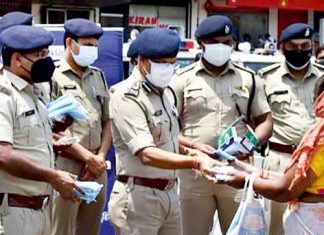Intro –
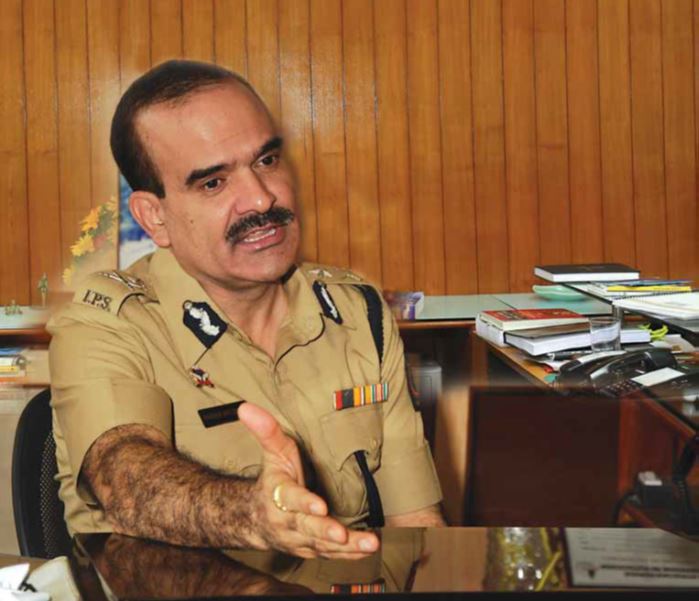
Parambir Singh, Commissioner of Police, Mumbai City had served as Inspector General Police (IG) of the Konkan Range and in the Anti-Terrorist Squad in Mumbai before being promoted to his present post . An IPS officer of the 1988 batch, Singh started his career as the first Assistant Commissioner of Customs in Kolkata from 1985 to 1988. However, as the IPS is his fervent passion, Singh pursued his dream career in the police service. Today, after 33 years of service, Singh has earned the reputation of being a daredevil cop; having handled several challenging assignments. He looks forward to a great and more challenging career.
Singh completed his education in Chandigarh, where he originally is from. Being a cop has always been his dream career. As a young officer, Singh looked up two super cops as his ideals – K.P.S. Gill and Julio Ribeiro, both former DGPs of Punjab.
Singh earned the reputation of being a daredevil cop during his stint in the violence-infested Naxal areas of Chandrapur and Bhandara in Maharashtra in the early years of his career. He was among the officers instrumental in neutralising the menace of the underworld in Mumbai. The Zone under his charge witnessed several encounters. He took on several notorious underworld gangs like Dawood, Chota Rajan, Arun Gawli and Amar Naik.
More recently, Singh played the most daring role of his career during the 26/11 terrorists attack in Mumbai in 2008. He was one of the first police officers to rush to the scene of carnage when news came in of the terrorist attack. Singh led from the front along with the NSG during the operation that lasted three days. The Malegaon blast was also cracked under his supervision; exposing the hitherto unexposed face of some organisations involved in terrorist activities.
An avid squash player and a fitness freak, Singh attribute his fit and fine physique to his passion for squash and his strict routine in the gymnasium. He encourages his colleagues to venture out and enjoy squash as a sport. He is fond of reading and often catches up with the latest films during his leisure time.
In an interview with Jyoti Pathak, Singh talks about the various aspects of his profession.
During the 26/11 terrorist attack in Mumbai, you were in the eye of the storm. What were the lessons learnt from this?
I immediately rushed to the Trident Hotel at around 10 pm as soon as I was notified of the attack by K. Venketashan, former Additional Commissioner of Police (Southern Region). Only after reaching the hotel did I realise the gravity of the situation when I heard the automatic fires from the machine guns used by the terrorists and the continuous blasts emanating from the bombs used by them. I stayed put in the hotel in coordination with the National Security Guards (NSG) until the operation was over.
I was the first police officer to reach the Vidhan Bhavan where the terrorists had abandoned the vehicle they had hijacked from the Cama & Albless Hospital, and in which Vijay Salaskar’s bodyguard, Constable Arun Jadhav was lying injured. It was Jadhav who informed me about the deaths of Hemant Karkare – Additional Commissioner of Police and Chief of the Anti-Terrorist Squad, Ashok Kamte, Deputy Inspector General of Police, and Vijay Salaskar, Senior Inspector and Encounter Specialist. I conveyed this news to the then Commissioner of Police, Mumbai, Hasan Gaffoor. I was also one of the first senior officers to reach Girgaum Chowpatty when I came to know that terrorists had escaped to Chowpatty. I also went after them, but the encounter was over by the time I reached there. I tried to interrogate the lone surviving gunman, Ajmal Kasab when he was captured. He was pretending to be dead but I instructed them to take him to the hospital. Thereafter, I went to The Oberoi where I had the chance to exchange fire a few times from the lane between NCPA and The Oberoi. Subsequently, I entered The Oberoi to evacuate guests from the hotel rooms. I then stationed with the NSG and coordinated with them till the end of the siege.
When I reached there, we tried to ensure that the terrorists did not get a chance to escape. The objective was to trap them; hence we ensured that the hotel exits were blocked. The other effort was to rescue as many people as possible from the hotel and then react to the threat.
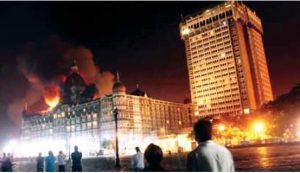 I exchanged fire with the terrorists from the road between The Oberoi and The Trident, which was the first exchange of fire between us and the terrorists at The Oberoi. Initially, I was alone with my bodyguard and two other policemen. A platoon from the State Reserve Police (SRP) and Quick Response Team or QRT team joined us later. Venkatesan also arrived soon after. We encircled The Oberoi completely. I went to the top of the Express Tower and other surrounding buildings to see if we could take a shot at the terrorists. Eventually, we were able to place a team at the top of the NCPA to retaliate and exchange fire with the terrorists.
I exchanged fire with the terrorists from the road between The Oberoi and The Trident, which was the first exchange of fire between us and the terrorists at The Oberoi. Initially, I was alone with my bodyguard and two other policemen. A platoon from the State Reserve Police (SRP) and Quick Response Team or QRT team joined us later. Venkatesan also arrived soon after. We encircled The Oberoi completely. I went to the top of the Express Tower and other surrounding buildings to see if we could take a shot at the terrorists. Eventually, we were able to place a team at the top of the NCPA to retaliate and exchange fire with the terrorists.
We had no idea how many terrorists were holed up inside the hotel. Unfortunately, there were no CCTV cameras installed at The Oberoi, so we had no idea about the kind of weapons they were using. The only source of information was from the guests who managed to come out of the hotel. We tried talking to them, though without much result, until the next morning when I was able to talk to a Turkish couple who were spared by the terrorists and was locked in a room by them. The couple told us that there were two terrorists inside and they had abandoned a bag in the room.
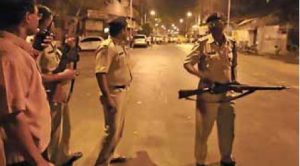 Around 7.30 am the next morning, we were able to get a clearer picture. Venkatesan and I briefed the NSG with all the information we had gathered. Marine Commandos came in late in the night from the Trident side and not the Oberoi side. We coordinated with them over wireless and mobile phones. Since the Marine Commandos did not have any significant role in the operation, they were subsequently withdrawn. NSG took over and our people went in with them and laid siege on the terrorists holed up at the hotel.
Around 7.30 am the next morning, we were able to get a clearer picture. Venkatesan and I briefed the NSG with all the information we had gathered. Marine Commandos came in late in the night from the Trident side and not the Oberoi side. We coordinated with them over wireless and mobile phones. Since the Marine Commandos did not have any significant role in the operation, they were subsequently withdrawn. NSG took over and our people went in with them and laid siege on the terrorists holed up at the hotel.
All the senior police officers, including myself, reached the spot within no time. There was no delay whatsoever on the part of Mumbai Police. The crucial aspect of this operation was that all the senior officers were leading from the front, and consequently, some of them lost their lives. As far as the response to the attack was concerned, the entire police force, including senior officers, was willing to fight and lay down their lives. They did not run away. They led from the front; demonstrating their leadership qualities and fighting capabilities.
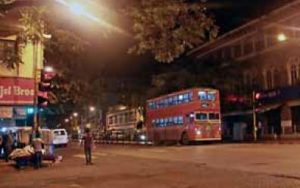 I was not the only one who learnt lessons from the Mumbai terrorist attack, but the entire police force. Nobody could foresee that an attack of this nature and magnitude could take place via the sea route. In the past, smuggling, landings of explosives, etc., had taken place through the sea route, but an attack of this extent was unforeseen.
I was not the only one who learnt lessons from the Mumbai terrorist attack, but the entire police force. Nobody could foresee that an attack of this nature and magnitude could take place via the sea route. In the past, smuggling, landings of explosives, etc., had taken place through the sea route, but an attack of this extent was unforeseen.
Another lesson we learnt from this operation was that the Quick Response Team or QRT was too small a team to tackle any emergency. That is why we increased their numbers from 48 to 1,500. We bought newer weapons and gadgets. We imparted these teams with training. We have tried to improve our skills and preparedness substantially. Today, we are better equipped to take on any threat of this calibre.
Do you think our police force has the requisite preparedness and training to face terrorist attacks of the kind we saw on 26/11? How, in your opinion, can it be improved further?
Preparedness and training to counter any possible security threat has improved in the State and the Konkan Range. We have strengthened our coastal security by involving the general public in the form of Sagar Rakshak Dals. More coastal police stations have been created by inducting more speed boats, equipment and more Quick Response Teams in all the four coastal districts.
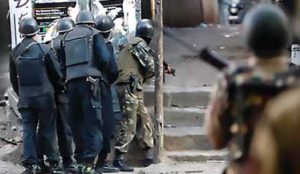 Sagar Rakshak Dals comprise able-bodied volunteers in the age group of say, 20 to 45 years, formed to assist the police in the coastal districts. It is a kind of community policing. Each village has five to six volunteers. The leaders of these Sagar Rakshak Dals are provided with telephones and contact numbers of senior police officers to communicate with our control room immediately about any suspicious movement. This, in my opinion, is the backbone of our coastal security. We have imparted them with adequate training and supplied with shirts and whistles as part of their uniform. They are part of the Sagar Kavach exercises for coastal security. Thus, Sagar Rakshak Dal is an integral part of our exercise in coastal security. Each coastal village has five to six volunteers and there are about 350 coastal villages. The total size is around 4,500, forming a sizeable number of volunteers which is useful and effective in policing the coastal areas.
Sagar Rakshak Dals comprise able-bodied volunteers in the age group of say, 20 to 45 years, formed to assist the police in the coastal districts. It is a kind of community policing. Each village has five to six volunteers. The leaders of these Sagar Rakshak Dals are provided with telephones and contact numbers of senior police officers to communicate with our control room immediately about any suspicious movement. This, in my opinion, is the backbone of our coastal security. We have imparted them with adequate training and supplied with shirts and whistles as part of their uniform. They are part of the Sagar Kavach exercises for coastal security. Thus, Sagar Rakshak Dal is an integral part of our exercise in coastal security. Each coastal village has five to six volunteers and there are about 350 coastal villages. The total size is around 4,500, forming a sizeable number of volunteers which is useful and effective in policing the coastal areas.
You have a long coastal Konkan Range under your jurisdiction. In the changed scenario after the 26/11 terrorist attack in Mumbai, what measures have you adopted to counter any possible infiltration?
Maharashtra carried out a gap analysis post the 26/11 scenario, following which the Coastal Security Scheme has been implemented in two stages. In the first stage, 12 new coastal police stations, 35 coastal check posts and considerable manpower have been sanctioned. In phase two, we will be getting more coastal police stations so that the concentration of police in the coastal areas is increased.
With a sizeable staff, the sanction of more coastal police stations work is on round-the-clock. Sea patrolling with newly-inducted boats has been going on regularly. In the wake of the 1993 bomb blasts in Mumbai, a joint coastal patrolling with trawlers, in association with the Navy, the Customs and the Coast Guard, is on.
Additionally, new and modern speed boats have also arrived as a crucial force multiplier in coastal security. Along with this, we are working in close coordination with the Navy and the Coast Guard. Thus, an efficient Coastal Security Scheme is in place.
The Coordinator for coastal security is the Commissioner of State Intelligence, K. L. Prasad. We have regular coordination meetings between the agencies at the State and District level. The Sagar Kavach exercises that we conduct once every three months have gone a long way in improving the coordination among various enforcement agencies.
What strategies do you think will work to tackle the Naxal problem?
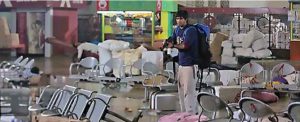 I have served in the violence-hit Naxal prone districts of Chandrapur and Bhandara in Maharashtra early on in my career as SP and Additional SP. The Naxal problem is not just a law and order issue; it is a development problem too, and the Government is tackling it on both levels. While the armed cadres have to be neutralised with force, the tribals who are being misguided and victimised by them have to be dealt with sympathetically.
I have served in the violence-hit Naxal prone districts of Chandrapur and Bhandara in Maharashtra early on in my career as SP and Additional SP. The Naxal problem is not just a law and order issue; it is a development problem too, and the Government is tackling it on both levels. While the armed cadres have to be neutralised with force, the tribals who are being misguided and victimised by them have to be dealt with sympathetically.
I successfully served in the Naxal-hit areas of Chandrapur during the first three years of my career, under the leadership of Hemant Karkare. I served first as ASP, then as Additional SP during this challenging assignment. We successfully wiped out the Naxal threat from the Chandrapur area. Thereafter, I served for two years as SP of Bhandara district, an area severely affected by the Naxal problem.
Could you elaborate on the welfare measures you initiated for the police force and their families?
First and foremost, I believe that to lift their morale, the police force needs to be treated with all fairness and give an ear to when they want to talk about various issues and problems. We should settle their dues, be it salary or any pending dues, at the earliest and at best on time. Low-cost housing projects are also planned to address the housing issues the Force faces. Health camps are being organised for them and their families. Under Kutumb Arogya Yojana, we ensure that they are treated in the best hospitals.
Was police service a career you always wanted to go for?
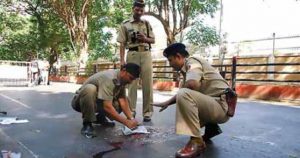 Police service was always my first and only career choice. My first appointment was with Indian Revenue Service (IRS) in the Customs Department where I was posted as the first Assistant Commissioner, Customs, in Kolkata from 1986 to 1988. However, I never lost sight of my ultimate goal – which was to be in police service – a goal I accomplished when I joined the Force in 1988. With this appointment, I lost three years of seniority in my service; something I have no regrets of. It was an absolute professional calling for me. I have thoroughly enjoyed my service with the police force and all the assignments have, therefore, been very satisfying.
Police service was always my first and only career choice. My first appointment was with Indian Revenue Service (IRS) in the Customs Department where I was posted as the first Assistant Commissioner, Customs, in Kolkata from 1986 to 1988. However, I never lost sight of my ultimate goal – which was to be in police service – a goal I accomplished when I joined the Force in 1988. With this appointment, I lost three years of seniority in my service; something I have no regrets of. It was an absolute professional calling for me. I have thoroughly enjoyed my service with the police force and all the assignments have, therefore, been very satisfying.
What are the other activities or hobbies you engage in to unwind after a long day at work? What is your fitness regimen?
I am a passionate squash player and have represented The Cricket Club of India in various squash matches. I have also encouraged my other colleagues to join this game. I am quite a fitness freak, so I am very regular with my gymnasium routine. I am fond of reading and watching movies and catch up with them whenever I find the time.
What are your landmark achievements in your career? Who are your role models, the people who have inspired you professionally?
My postings in the Naxal-affected areas of Maharashtra as ASP, Addl. SP & SP, in the initial years of my career, were probably my best stint in the police service.
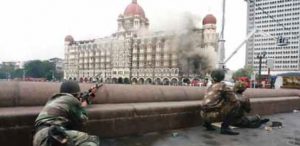 We were able to wipe out violence from the Naxal-ridden areas of Chandrapur. In my tenure in Mumbai City as DCP, I was able to play a role in eradicating the underworld from Mumbai. That provided a great deal of satisfaction, professionally.
We were able to wipe out violence from the Naxal-ridden areas of Chandrapur. In my tenure in Mumbai City as DCP, I was able to play a role in eradicating the underworld from Mumbai. That provided a great deal of satisfaction, professionally.
Julio Ribeiro, the former DGP Punjab & Commissioner of Police, Mumbai; K.P.S Gill, who was also the former DGP of Punjab, and D. Sivanandhan, former Director-General of Police, Maharashtra, are some of the people who have inspired me the most professionally with their handling of a wide range of challenging assignments.
Is it possible to minimise corruption and fight this menace in the police force?
Corruption is not all-pervasive in the police force as is perceived. Some black sheep are everywhere. To eradicate this menace, a continuous effort is on to make the department as transparent as possible. Any complaint of corruption and high handedness is dealt with very strictly.

